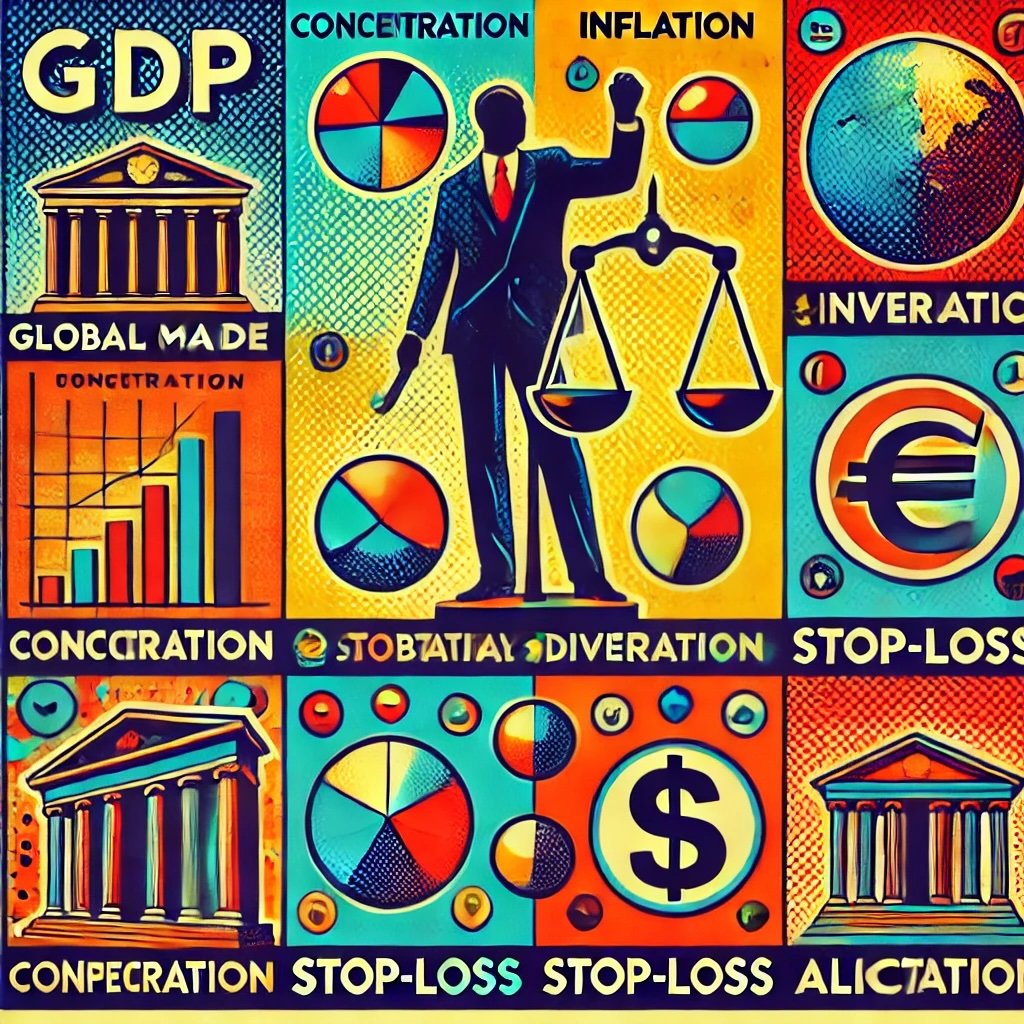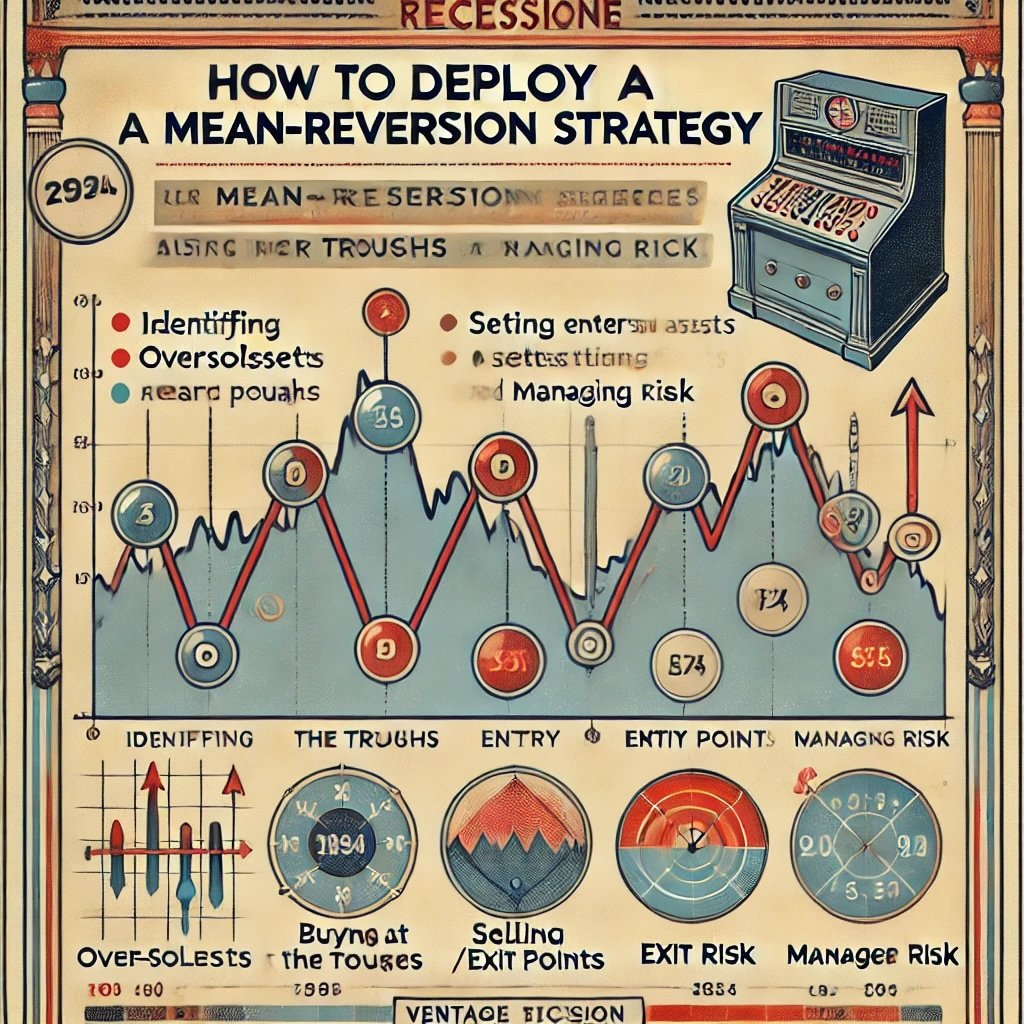Investing like Stanley Druckenmiller means mastering the art of global macro trading, implementing strategic risk management, and cultivating a resilient mindset. As a legendary hedge fund manager and the driving force behind the Quantum Fund, Druckenmiller has left an indelible mark on the world of finance. Whether you’re a budding investor or a seasoned trader, adopting Druckenmiller’s principles can significantly enhance your trading approach, leading to consistent success and impressive returns. In this comprehensive guide, we’ll delve into Stanley Druckenmiller’s trading philosophy, explore his core strategies, and provide actionable insights to help you emulate his success in global macro trading.
source: FX Education FX Analysis on YouTube
Stanley Druckenmiller: A Titan in Global Macro Trading
Stanley Druckenmiller is a name that commands respect and admiration in the realm of global macro trading. Known for his exceptional ability to predict market trends and make bold, profitable trades, Druckenmiller has solidified his reputation as one of the most successful hedge fund managers of all time. His strategic insights and disciplined approach have not only yielded substantial returns but also influenced countless traders and investors worldwide.

Understanding Bond Trading and Its Significance in Financial Markets
Bond trading involves buying and selling debt securities, such as government and corporate bonds, to capitalize on interest rate fluctuations and credit quality changes. As a cornerstone of the global financial system, the bond market plays a crucial role in financing governments, corporations, and other entities. Its significance lies in providing investors with opportunities to generate income, preserve capital, and diversify their investment portfolios.
We’ll explore Stanley Druckenmiller’s trading strategies and his profound influence on global macro trading. By understanding his approach, investors can gain valuable insights into building and implementing effective trading systems. From risk management to psychological discipline, we’ll cover the multifaceted aspects that make Stanley Druckenmiller a legendary figure in bond trading.

Who is Stanley Druckenmiller?
Background and Early Life of Stanley Druckenmiller
Stanley Druckenmiller was born in New York City in 1953. From a young age, he exhibited a keen interest in mathematics and economics, laying the groundwork for his future career in finance. Druckenmiller pursued his higher education at Bowdoin College, where he graduated with a degree in economics. His academic prowess and analytical skills quickly set him apart, paving the way for a successful career in the financial markets.
Journey from a Research Analyst to a Legendary Hedge Fund Manager
Druckenmiller’s professional journey began at Dominick & Dominick LLC, where he worked as a research analyst. His exceptional ability to analyze economic data and predict market movements caught the attention of George Soros, leading to a pivotal partnership. In 1983, Druckenmiller joined Quantum Fund, managed by Soros, and played a crucial role in one of the most famous trades in financial history.
Key Achievements and Contributions to Bond Trading
- Partnership with George Soros: Together, Druckenmiller and Soros orchestrated the historic short sale of the British pound in 1992, profiting immensely from the UK’s exit from the Exchange Rate Mechanism (ERM).
- Founding Duquesne Capital: In 1981, Druckenmiller established Duquesne Capital, which consistently delivered remarkable returns, outperforming the market and earning him accolades as a top hedge fund manager.
- Philanthropy and Mentorship: Beyond trading, Druckenmiller is known for his philanthropic efforts and commitment to mentoring the next generation of traders, sharing his insights and experiences to foster growth and excellence in the trading community.
- Authorship and Thought Leadership: Druckenmiller has authored numerous articles and shared his trading philosophy through interviews and speeches, influencing traders and investors globally.

The Quantum Fund and the Breaking of the Bank of England
Overview of the Quantum Fund and Its Role in Druckenmiller’s Career
The Quantum Fund, co-managed by George Soros and Stanley Druckenmiller, is one of the most successful hedge funds in history. Established in 1973, the fund became synonymous with aggressive and innovative trading strategies, focusing on global macroeconomic trends. Under Druckenmiller’s leadership, Quantum Fund achieved extraordinary performance, leveraging economic insights and strategic trading to generate substantial returns for its investors.
The Famous Trade Against the British Pound in 1992
In 1992, Britain was facing significant economic challenges, particularly regarding its currency, the British pound. The UK was part of the Exchange Rate Mechanism (ERM), which required it to maintain the pound’s value within a specified range against the Deutsche Mark. However, rising interest rates in Europe made it increasingly difficult for the UK to sustain its currency peg without raising domestic interest rates, which could stifle economic growth.
Stanley Druckenmiller, alongside George Soros, recognized the vulnerability of the British pound. They hypothesized that the UK’s economic fundamentals would not support the high interest rates needed to maintain the ERM peg. Acting on this insight, Druckenmiller orchestrated a massive short sale of the British pound, betting that its value would plummet.
Lessons Learned from the “Breaking of the Bank of England”
- Economic Fundamentals Matter: The trade underscored the importance of aligning trading strategies with underlying economic fundamentals rather than relying solely on technical indicators or market sentiment.
- Patience and Conviction: Druckenmiller’s unwavering conviction in his analysis exemplified the importance of patience and sticking to one’s research, even when market sentiment opposes it.
- Impact of Global Events: The trade highlighted how significant global events and policy decisions can create lucrative trading opportunities for those who anticipate and understand their implications.
- Risk Management: Despite the massive exposure, the trade was carefully managed to mitigate potential losses, demonstrating the balance between aggressive risk-taking and disciplined risk management.

Core Principles of Stanley Druckenmiller’s Trading Strategy
Stanley Druckenmiller’s trading success is built upon a foundation of core principles that guide his decision-making and execution. These principles ensure that his trading remains disciplined, strategic, and adaptable to changing market conditions.
1. Global Macro Trading: Focusing on Macroeconomic Trends
Global macro trading involves making investment decisions based on broad economic and political views of various countries or their macroeconomic principles. Druckenmiller excels in this area by analyzing global economic indicators, geopolitical events, and policy changes to predict market movements.
Key Aspects of Global Macro Trading:
- Economic Indicators: Monitoring GDP growth rates, inflation, unemployment rates, and other key economic indicators to gauge the health of economies.
- Geopolitical Events: Assessing the impact of political stability, elections, wars, and international relations on financial markets.
- Policy Analysis: Understanding central bank policies, fiscal policies, and regulatory changes that can influence interest rates and market sentiment.
2. Risk Management: Capital Preservation and Strategic Risk-Taking
Risk management is paramount in Druckenmiller’s trading strategy. He emphasizes the importance of capital preservation while being willing to take calculated risks when his conviction in a trade is high.
Risk Management Techniques:
- Position Sizing: Allocating a specific portion of the portfolio to each trade based on the level of risk and confidence in the trade.
- Stop-Loss Orders: Implementing stop-loss orders to limit potential losses on any given trade, ensuring that no single position can significantly impact the overall portfolio.
- Diversification: Spreading investments across various asset classes, sectors, and geographies to mitigate risk and reduce exposure to any single market event.
3. Concentration vs. Diversification: Balancing Focus and Spread
While diversification is a key aspect of risk management, Druckenmiller also understands the value of concentrated bets when he has high conviction in a particular trade.
Balancing Concentration and Diversification:
- High-Conviction Trades: Allocating larger positions to trades where he has strong confidence based on thorough analysis.
- Diversified Portfolio: Maintaining a diversified portfolio to ensure that overall risk remains manageable, even when taking concentrated positions.
- Dynamic Allocation: Adjusting the balance between concentrated and diversified positions based on market conditions and evolving economic landscapes.
4. Flexibility and Adaptability: Shifting Capital Quickly
The ability to adapt to changing market conditions and shift capital swiftly is a hallmark of Druckenmiller’s trading strategy. He avoids rigid adherence to predetermined positions, allowing him to capitalize on emerging opportunities and mitigate risks as they arise.
Strategies for Flexibility and Adaptability:
- Active Monitoring: Continuously monitoring market developments and economic indicators to stay informed and ready to act.
- Quick Decision-Making: Making swift trading decisions when favorable opportunities present themselves, without hesitation.
- Adjusting Strategies: Being willing to modify or abandon strategies that are no longer effective in the current market environment.
Integration of Core Principles
Druckenmiller’s trading strategy seamlessly integrates these core principles. By combining global macro analysis, disciplined risk management, strategic concentration, and adaptability, he creates a comprehensive and effective trading framework that can navigate the complexities of global financial markets.
![]()
Famous Trades and Market Calls
Stanley Druckenmiller’s career is marked by several notable trades that highlight the effectiveness of his global macro approach. These trades not only showcase his ability to anticipate market movements but also provide valuable lessons for traders looking to adopt similar strategies.
1. The Short Sale of the British Pound (1992)
One of the most famous trades in financial history is the short sale of the British pound orchestrated by Druckenmiller and George Soros in 1992. Known as the “Breaking of the Bank of England,” this trade capitalized on the UK’s economic challenges and the unsustainable nature of its currency peg within the Exchange Rate Mechanism (ERM).
Strategy Behind the Trade:
- Economic Analysis: Recognizing that the UK’s economic fundamentals could not support the high interest rates required to maintain the ERM peg.
- Market Sentiment: Understanding the market’s growing skepticism about the UK’s ability to defend the pound against speculative attacks.
- Timing: Executing the short sale before the full collapse of the pound, maximizing profits while minimizing risk.
Outcome and Impact:
The short sale resulted in massive profits, reinforcing the importance of thorough economic analysis and timing in global macro trading. This trade also demonstrated the significant influence a well-executed macro strategy can have on global financial markets.
2. The Long Position on U.S. Stocks (Late 1990s)
During the late 1990s, Druckenmiller took a substantial long position in U.S. equities, anticipating the sustained growth of the American economy and the burgeoning technology sector.
Strategy Behind the Trade:
- Economic Growth: Betting on the robust economic expansion and low unemployment rates in the U.S.
- Technological Advancements: Identifying the potential of emerging technologies and their impact on stock performance.
- Market Trends: Leveraging momentum trading techniques to capitalize on rising market trends.
Outcome and Impact:
This long position yielded significant returns as the U.S. stock market continued its upward trajectory. It underscored the effectiveness of combining macroeconomic analysis with technical trend-following strategies.
3. The Gold Rally Trade (2010-2011)
In the early 2010s, Druckenmiller identified a bullish trend in gold prices, driven by economic uncertainty and inflation fears.
Strategy Behind the Trade:
- Inflation Hedge: Positioning in gold as a hedge against potential inflation and currency devaluation.
- Geopolitical Tensions: Capitalizing on geopolitical uncertainties that increased demand for safe-haven assets.
- Technical Indicators: Using technical analysis to time entry and exit points effectively.
Outcome and Impact:
The gold rally trade resulted in substantial profits, demonstrating the value of recognizing and acting on macroeconomic and geopolitical trends. This trade also highlighted the importance of using a combination of fundamental and technical analysis in global macro trading.
Key Takeaways from Baldwin’s Famous Trades
- Comprehensive Analysis: Successful trades are built on a foundation of thorough economic, geopolitical, and technical analysis.
- Timing is Crucial: Entering and exiting trades at the right time can significantly amplify profits and reduce risks.
- Adaptability: Being flexible and willing to shift strategies in response to changing market conditions is essential for sustained success.
- Risk Management: Implementing disciplined risk management techniques ensures that capital is preserved, even when trades do not go as planned.
Relevance of Baldwin’s Trades Today
The principles demonstrated in Druckenmiller’s famous trades remain highly relevant in today’s financial markets. With the advent of new technologies, evolving economic landscapes, and unprecedented global events, the need for a disciplined, analytical, and adaptable trading approach has never been greater. Traders can draw inspiration from these trades to develop strategies that are both robust and flexible, capable of navigating the complexities of modern markets.

Risk Management Techniques
Detailed Look at Druckenmiller’s Approach to Managing Risk in Global Macro Trading
Risk management is not merely a component of Druckenmiller’s trading strategy; it is the foundation upon which his success is built. By prioritizing capital preservation and implementing disciplined risk management protocols, Druckenmiller ensures that his trading activities are sustainable and resilient, even in volatile markets.
1. Use of Stop-Loss Orders
Stop-loss orders are essential tools for limiting potential losses on trades. Druckenmiller employs stop-loss orders to protect his capital and maintain a controlled risk environment.
Implementing Stop-Loss Orders:
- Strategic Placement: Placing stop-loss orders at key technical levels, such as support or resistance zones, to avoid being prematurely stopped out by minor price fluctuations.
- Dynamic Stops: Adjusting stop-loss levels based on evolving market conditions and the strength of the trade, allowing for flexibility while maintaining protection.
- Automated Execution: Utilizing automated trading systems to ensure that stop-loss orders are executed promptly, removing emotional bias from the decision-making process.
2. Position Sizing: Allocating Risk Appropriately
Position sizing involves determining the appropriate amount to invest in each trade based on the level of risk and the trader’s overall portfolio.
Key Strategies for Position Sizing:
- Fixed Fractional Method: Allocating a fixed percentage of the portfolio to each trade, ensuring that no single position can disproportionately impact the overall portfolio.
- Volatility-Based Sizing: Adjusting the size of each position based on the volatility of the asset being traded. More volatile assets receive smaller positions to mitigate risk.
- Risk-Reward Assessment: Evaluating the potential risk and reward of each trade to determine the optimal position size, aiming for trades where the potential reward justifies the risk.
3. Leverage: Balancing Risk and Reward
Leverage can amplify both profits and losses, making its effective management crucial in Druckenmiller’s trading strategy.
Strategies for Managing Leverage:
- Conservative Leverage Levels: Using leverage levels that align with his risk tolerance and trading strategy, avoiding excessive exposure that can lead to significant losses.
- Monitoring Leverage: Continuously monitoring leveraged positions to ensure that they remain within acceptable risk parameters.
- Risk-Adjusted Returns: Evaluating the potential returns against the associated risks to determine appropriate leverage levels for each trade.
4. Diversification: Spreading Risk Across Markets
Diversification involves spreading investments across various asset classes and regions to reduce exposure to any single source of risk.
Diversification Strategies:
- Asset Class Selection: Trading a diverse range of asset classes, including currencies, commodities, equities, and fixed income, to spread risk and capitalize on multiple market opportunities.
- Geographical Diversification: Allocating investments across different regions to mitigate the impact of localized economic downturns and geopolitical events.
- Sector Diversification: Investing in various sectors to avoid concentration risk and enhance the resilience of the portfolio.
5. Hedging: Protecting Against Adverse Movements
Hedging involves taking positions that offset potential losses in other parts of the portfolio, providing a safety net against adverse market movements.
Hedging Techniques:
- Options and Futures: Utilizing derivatives like options and futures to hedge against potential price declines in key holdings.
- Inverse Correlation Assets: Investing in assets that have an inverse correlation with primary investments to balance the portfolio’s overall risk exposure.
- Dynamic Hedging: Adjusting hedge positions in response to changing market conditions and portfolio adjustments.
6. Stress Testing and Scenario Analysis
Stress testing and scenario analysis involve evaluating how the portfolio would perform under extreme market conditions or specific adverse scenarios.
Key Practices:
- Historical Scenarios: Applying historical market events to assess how the portfolio would have fared during past crises or significant market shifts.
- Hypothetical Scenarios: Creating hypothetical scenarios based on potential future events to evaluate the portfolio’s resilience and identify vulnerabilities.
- Regular Reviews: Conducting regular stress tests and scenario analyses to ensure that the portfolio remains robust and adaptable to changing market dynamics.
Implementing Druckenmiller’s Risk Management Techniques
To effectively implement Druckenmiller’s risk management techniques, traders should:
- Define Clear Risk Parameters: Establish specific limits for maximum acceptable losses per trade and overall portfolio risk, ensuring alignment with personal risk tolerance and trading objectives.
- Utilize Technology: Leverage advanced trading platforms and software to automate risk management measures, ensuring consistent application and reducing the potential for human error.
- Continuous Monitoring: Regularly monitor the portfolio’s risk exposure, making adjustments as necessary to maintain an optimal balance between risk and reward.
- Stay Informed: Keep abreast of market developments and economic indicators to anticipate and respond to potential risks proactively.

The Role of Psychology in Trading
Druckenmiller’s Views on the Psychological Challenges of Trading
Stanley Druckenmiller recognizes that psychology plays a pivotal role in trading success. The emotional highs and lows of trading can significantly impact decision-making, often leading to impulsive actions that deviate from strategic plans. Druckenmiller emphasizes the importance of mastering one’s emotions and maintaining psychological discipline to achieve consistent trading performance.
Techniques for Maintaining Discipline and Emotional Control
1. Developing Emotional Resilience
Emotional resilience is the ability to recover quickly from setbacks and maintain composure during stressful trading situations. Druckenmiller employs several techniques to cultivate this trait:
- Mindfulness Practices: Engaging in mindfulness and meditation to enhance focus, reduce stress, and maintain emotional balance.
- Physical Fitness: Maintaining physical health through regular exercise contributes to overall mental well-being, improving cognitive function and emotional resilience.
- Continuous Learning: Staying informed and educated builds confidence and reduces anxiety, empowering traders to make informed decisions without fear.
2. Adhering to a Strict Trading Plan
Discipline is the backbone of successful trading. Druckenmiller emphasizes the importance of sticking to a predefined trading plan to avoid impulsive decisions driven by emotions.
- Predefined Rules: Clearly outlining entry and exit criteria based on thorough analysis ensures objective decision-making.
- Routine and Structure: Establishing a consistent trading routine reinforces disciplined behavior and minimizes emotional interference.
- Automated Trading Systems: Utilizing automated systems to execute trades based on predefined rules reduces the potential for emotional bias, ensuring consistency.
3. Risk of Overconfidence and Confirmation Bias
Overconfidence can lead to excessive risk-taking and neglecting proper risk management protocols. Confirmation bias, where traders seek information that confirms their existing beliefs, can result in flawed trading decisions.
- Awareness and Mitigation: Recognizing these biases and implementing strategies to mitigate their impact, such as seeking diverse perspectives and adhering to objective analysis.
Impact of Psychological Resilience on Trading Performance and System Adherence
Psychological resilience enables traders to:
- Handle Losses: Accept and learn from losses without becoming discouraged or deviating from the trading system.
- Stay Focused: Maintain focus on long-term goals and strategies, even during periods of market turbulence.
- Adapt to Change: Remain adaptable and open to refining strategies based on new information and evolving market conditions.
Stanley Druckenmiller’s Psychological Strategies
Druckenmiller employs several psychological strategies to maintain discipline and emotional resilience:
- Journaling: Keeping a trading journal to document trades, emotions, and reflections helps identify patterns and areas for improvement.
- Setting Realistic Goals: Establishing achievable trading goals maintains motivation and avoids undue pressure.
- Developing a Support System: Engaging with fellow traders, mentors, or support groups to share experiences and gain insights fosters a sense of community and accountability.
Importance of Mental Resilience in Executing Trades Effectively
Mental resilience is crucial for executing trades effectively, as it allows traders to:
- Maintain Composure: Stay calm and composed during volatile market conditions, ensuring rational decision-making.
- Stay Disciplined: Adhere to trading plans and strategies without succumbing to emotional impulses.
- Adapt to Market Changes: Quickly adapt to shifting market dynamics and refine strategies as needed, maintaining trading effectiveness.

Building a Global Macro Trading Strategy
Step-by-Step Guide to Developing a Global Macro Trading Strategy Inspired by Druckenmiller
Creating a robust global macro trading strategy requires a structured and disciplined approach. Here’s a step-by-step guide inspired by Stanley Druckenmiller’s methodologies:
1. Define Your Trading Goals
- Identify Objectives: Determine what you aim to achieve with your trading strategy, such as capital growth, income generation, or risk mitigation.
- Set Time Horizons: Establish short-term and long-term goals to guide your trading activities, ensuring alignment with your overall financial objectives.
2. Conduct Comprehensive Market Analysis
- Data Collection: Gather historical price data, economic indicators, and other relevant information from reliable sources.
- Trend Identification: Use statistical tools and macroeconomic analysis to identify trends and patterns in the data, focusing on sustained movements that can be capitalized upon.
3. Develop Trading Rules and Algorithms
- Rule Creation: Define specific criteria for entering and exiting trades based on your analysis. This includes identifying key macroeconomic indicators and signals that indicate potential trading opportunities.
- Algorithm Development: Translate your trading rules into algorithms that can execute trades automatically. This ensures consistency and removes emotional bias from the trading process.
4. Backtest Your Strategy
- Historical Testing: Apply your trading strategy to historical data to evaluate its performance. This helps in assessing the viability and profitability of the strategy before deploying it in live markets.
- Performance Metrics: Analyze key metrics such as profitability, drawdowns, win-loss ratios, and risk-adjusted returns to gauge the effectiveness of your strategy.
5. Optimize and Refine Your Strategy
- Parameter Tuning: Adjust the parameters of your trading rules and algorithms based on backtesting results to enhance performance. This may involve tweaking indicator settings or adjusting risk management protocols.
- Validation: Test the optimized strategy on out-of-sample data to ensure its robustness and adaptability to different market conditions.
6. Implement Risk Management Techniques
- Position Sizing: Determine the appropriate size for each trade based on your risk tolerance and the volatility of the asset being traded.
- Stop-Loss Orders: Set predefined exit points to limit potential losses, ensuring that no single trade can significantly impact your overall portfolio.
- Diversification: Spread investments across various asset classes and regions to mitigate risk and enhance portfolio resilience.
7. Execute and Monitor Your Strategy
- Automated Execution: Utilize trading platforms that support automated trading to implement your strategy efficiently and consistently.
- Continuous Monitoring: Regularly review the performance of your trading system, tracking key metrics and making adjustments as necessary to maintain optimal performance.
Identifying and Analyzing Potential Trades
- Macroeconomic Indicators: Focus on key economic indicators such as GDP growth rates, inflation rates, interest rates, and employment figures to identify trading opportunities.
- Geopolitical Events: Assess the impact of geopolitical developments, including elections, wars, and international agreements, on financial markets.
- Technical Signals: Use technical analysis to identify entry and exit points, ensuring that trades are based on objective criteria.
Tips for Refining and Adapting the Strategy Over Time
- Regular Reviews: Periodically assess your trading strategy’s performance and make necessary adjustments to improve efficiency and profitability.
- Adapt to Market Changes: Be willing to modify your strategy in response to evolving market conditions and new information, ensuring that it remains effective in different environments.
- Continuous Learning: Stay informed about new trading techniques, technologies, and market trends to enhance your strategy and maintain a competitive edge.
- Seek Feedback: Engage with other traders or mentors to gain valuable feedback and incorporate diverse perspectives into your trading strategies.
Sample Global Macro Trading Strategy Inspired by Druckenmiller
Here’s an example of a simple global macro trading strategy inspired by Stanley Druckenmiller:
Strategy Overview
- Markets: U.S. Treasury Bonds, EUR/USD Currency Pair, Gold Commodities
- Time Frame: Daily charts
- Indicators: Moving Average Convergence Divergence (MACD), Relative Strength Index (RSI), and Bollinger Bands
- Entry Rules:
- Long Position (Treasury Bonds): Enter a long position when the MACD line crosses above the signal line, RSI is above 50, and the price touches the lower Bollinger Band.
- Short Position (EUR/USD): Enter a short position when the MACD line crosses below the signal line, RSI is below 50, and the price touches the upper Bollinger Band.
- Exit Rules:
- Long Position Exit: Exit when the MACD line crosses below the signal line or RSI drops below 50.
- Short Position Exit: Exit when the MACD line crosses above the signal line or RSI rises above 50.
- Risk Management:
- Position Sizing: Allocate 2% of the portfolio to each trade.
- Stop-Loss: Set a stop-loss at 1% below the entry price for long positions and 1% above for short positions.
- Take-Profit: Set a take-profit target at 2% above the entry price for long positions and 2% below for short positions.
Implementation Steps
- Define Trading Rules: Clearly outline the conditions for entering and exiting trades based on MACD, RSI, and Bollinger Bands.
- Develop Algorithm: Program the rules into a trading platform that supports automated trading, ensuring consistent and objective execution.
- Backtest: Apply the strategy to historical data across Treasury Bonds, EUR/USD, and Gold to evaluate its performance, focusing on key metrics like profitability and drawdowns.
- Optimize: Adjust the indicator settings or risk management rules to enhance profitability and reduce drawdowns, ensuring the strategy remains robust.
- Forward Test: Implement the strategy in a simulated trading environment to observe real-time performance without risking capital.
- Execute: Deploy the strategy in a live trading account with proper risk management measures in place, adhering strictly to the predefined rules.
- Monitor and Refine: Continuously track the strategy’s performance, making adjustments as necessary to maintain optimal performance and adapt to changing market conditions.

Challenges of Global Macro Trading
Potential Pitfalls and Difficulties in Adopting a Global Macro Trading Approach
While global macro trading offers significant opportunities, it also presents several challenges that traders must navigate to achieve sustained success. Understanding these pitfalls and implementing strategies to overcome them is crucial for anyone looking to adopt a global macro trading approach inspired by Stanley Druckenmiller.
1. High Volatility and Rapid Market Changes
Global macro markets are inherently volatile, with currency prices, commodity values, and equity markets influenced by a myriad of factors. This high volatility can lead to rapid and substantial price movements, presenting both opportunities and risks.
- Risk: Sudden price swings can trigger stop-loss orders, resulting in unexpected losses.
- Solution: Implement robust risk management techniques, such as volatility-based position sizing and diversified trading strategies, to mitigate the impact of adverse price movements.
2. Emotional Strain and Stress
The fast-paced nature of global macro trading can be emotionally taxing, leading to stress and burnout. The pressure to make quick decisions and the fear of losing capital can impact mental well-being and trading performance.
- Risk: Emotional decision-making can result in impulsive trades and deviations from the trading plan, undermining strategy effectiveness.
- Solution: Cultivate emotional resilience through mindfulness practices, maintain a trading journal to track emotions and decisions, and adhere strictly to a predefined trading plan to minimize emotional interference.
3. Information Overload
The vast amount of information available to global macro traders can be overwhelming. Analyzing and interpreting diverse data sources, including economic indicators, news events, and technical signals, can be challenging.
- Risk: Difficulty in filtering relevant information can lead to analysis paralysis or missed trading opportunities.
- Solution: Utilize automated trading systems to handle data analysis and execute trades, allowing traders to focus on strategy refinement and decision-making based on key insights.
4. Complexity of Global Markets
Global markets are influenced by a multitude of factors, including economic policies, geopolitical events, and market sentiment. Navigating this complexity requires a deep understanding of various interconnected elements.
- Risk: Misinterpretation of economic data or geopolitical developments can lead to incorrect trading decisions.
- Solution: Invest time in comprehensive market research and education to build a robust understanding of global macroeconomic principles and their impact on financial markets.
How to Overcome Common Challenges in Global Macro Trading
Overcoming the challenges associated with global macro trading requires a proactive and disciplined approach. Here are strategies to address common obstacles:
1. Robust Risk Management
Implement comprehensive risk management strategies to protect capital and minimize losses.
- Position Sizing: Allocate a fixed percentage of the portfolio to each trade based on risk tolerance.
- Stop-Loss Orders: Set predefined exit points to limit potential losses.
- Diversification: Spread investments across various asset classes and regions to mitigate risk.
2. Emotional Discipline
Cultivate emotional resilience to maintain focus and discipline during trading.
- Mindfulness Practices: Engage in activities like meditation to enhance emotional control and reduce stress.
- Trading Journal: Keep a record of trades and emotions to identify patterns and areas for improvement.
- Set Realistic Goals: Establish achievable trading goals to maintain motivation and avoid undue pressure.
3. Continuous Learning and Adaptation
Stay informed and adapt trading strategies based on evolving market conditions.
- Stay Updated: Regularly follow financial news, economic indicators, and market analyses.
- Refine Strategies: Continuously evaluate and adjust trading strategies to align with current market dynamics.
- Seek Feedback: Engage with other traders or mentors to gain insights and refine approaches.
4. Utilize Technology and Tools
Leverage advanced trading platforms and analytical tools to enhance trading efficiency.
- Automated Trading Systems: Use algorithms to execute trades based on predefined rules, reducing emotional interference.
- Analytical Software: Utilize tools like TradingView or MetaTrader for technical analysis and strategy development.
- Data Sources: Access reliable data sources like Bloomberg or Quandl to inform trading decisions.
The Importance of Staying Informed and Adaptable in Fast-Moving Markets
In the dynamic world of global macro trading, staying informed and adaptable is essential for maintaining a competitive edge. Traders must continuously monitor market conditions, economic indicators, and geopolitical events that can influence asset prices. Being adaptable allows traders to modify their strategies in response to new information, ensuring sustained effectiveness and profitability.
Strategies for Staying Informed and Adaptable:
- Subscribe to Financial News: Regularly follow reputable financial news outlets like Bloomberg, Reuters, and The Wall Street Journal for real-time updates and insights.
- Attend Seminars and Webinars: Participate in industry seminars, webinars, and conferences to gain insights from experts and stay abreast of the latest trends.
- Network with Professionals: Engage with other traders, analysts, and financial professionals to exchange ideas and perspectives.
- Regular Strategy Reviews: Periodically assess and refine your trading strategies to ensure they remain aligned with current market conditions and your investment goals.

How to Start Trading Like Stanley Druckenmiller
Practical Steps for Implementing Druckenmiller’s Strategies in Your Own Trading
Emulating Stanley Druckenmiller’s trading approach involves a blend of strategic planning, disciplined execution, and continuous learning. Here are practical steps to help you incorporate Druckenmiller’s methodologies into your own trading practice:
1. Educate Yourself in Global Macro Trading
- Foundational Knowledge: Gain a solid understanding of global macro trading principles, including macroeconomic analysis, geopolitical assessment, and market sentiment evaluation.
- Advanced Studies: Pursue advanced courses or certifications in trading strategies, economic analysis, and risk management to enhance your expertise and stay competitive.
2. Develop a Comprehensive Trading Plan
- Define Objectives: Clearly outline your trading goals, including desired returns, risk tolerance, and investment horizon. This clarity will guide your trading decisions and strategy formulation.
- Strategy Formulation: Develop trading strategies based on macroeconomic analysis, risk management, and market timing principles. Ensure that your strategies are aligned with your trading goals and risk appetite.
- Risk Management Protocols: Establish rules for position sizing, stop-loss orders, and portfolio diversification to protect your capital and minimize potential losses.
3. Start with a Simulated Trading Environment
- Paper Trading: Begin by executing your trading strategies in a simulated environment to gain experience without risking real capital. This practice helps in refining strategies and building confidence.
- Backtesting: Apply your strategies to historical data to evaluate their performance and identify areas for improvement. Backtesting provides insights into how your strategies would have performed under different market conditions.
4. Gradually Scale Up Your Trading Activities
- Small Positions: Start with small positions to test your strategies in live market conditions without exposing yourself to significant risk. This approach allows for real-time learning and adjustment.
- Incremental Scaling: Gradually increase your position sizes as you gain confidence and experience in your trading strategies. Scaling up should be aligned with your trading plan and risk management protocols.
5. Implement Automated Trading Systems
- Algorithm Development: Translate your trading rules into algorithms that can execute trades automatically based on predefined criteria. Automated systems ensure consistent and objective trade execution.
- Platform Selection: Choose reliable trading platforms that support automated trading and offer robust analytical tools. Platforms like MetaTrader, Thinkorswim, and Interactive Brokers’ Trader Workstation are popular choices.
6. Monitor and Refine Your Trading Systems
- Performance Tracking: Continuously monitor the performance of your trading systems using key metrics such as profitability, drawdown, and risk-adjusted returns. Regular tracking helps in assessing the effectiveness of your strategies.
- System Refinement: Regularly update and optimize your trading systems based on performance data and changing market conditions. Refinement ensures that your strategies remain effective and adaptable.
- Stay Adaptable: Be willing to pivot your strategies in response to new information or shifts in global economic trends, ensuring that your trading systems remain relevant and effective.
Resources for Learning More About Global Macro Trading Techniques
To deepen your understanding of global macro trading and refine your strategies, consider the following resources:
Books
- Currency Trading for Dummies by Brian Dolan and Kathleen Brooks: A comprehensive guide for beginners looking to understand the basics of forex trading.
- The Alchemy of Finance by George Soros: Explores the philosophy and strategies behind one of the most successful investors, offering insights applicable to global macro trading.
- Global Macro Trading: Profiting in a New World Economy by Greg Gliner: Provides detailed strategies and techniques for trading based on macroeconomic trends.
- Trading and Exchanges: Market Microstructure for Practitioners by Larry Harris: Offers an in-depth look at how markets operate, essential for understanding the mechanics of global macro trading.
Online Courses and Workshops
- Coursera’s Financial Markets by Yale University: Offers comprehensive insights into financial markets and trading strategies, taught by renowned professors.
- Udemy’s Global Macro Trading Strategies: Focuses on developing and implementing macro trading strategies with practical examples.
- edX’s Introduction to Computational Thinking and Data Science: Enhances your ability to develop algorithmic trading strategies through data analysis and computational techniques.
Websites and Journals
- Investopedia: Features a wealth of articles and tutorials on global macro trading and related financial concepts.
- TradingView: Offers advanced charting tools, a vibrant community of traders, and educational resources to support your trading activities.
- The Journal of Portfolio Management: Provides in-depth research and analysis on trading strategies and portfolio management, catering to advanced traders and financial professionals.
Tools and Platforms to Support Global Macro Trading Activities
Leveraging the right tools and platforms is essential for developing, testing, and executing global macro trading strategies. Here are some recommended options:
Trading Platforms
- MetaTrader 4/5: Known for its advanced charting capabilities, automated trading features, and user-friendly interface, MetaTrader is a popular choice among traders looking to implement automated strategies.
- Thinkorswim by TD Ameritrade: Offers comprehensive trading tools, real-time data, and support for automated trading strategies, catering to both novice and experienced traders.
- Interactive Brokers’ Trader Workstation (TWS): Renowned for its extensive range of tradable assets, low commission rates, and robust trading tools, making it suitable for high-volume traders.
Analytical Tools
- Bloomberg Terminal: Delivers in-depth financial data, analytics, and trading tools for professional traders, providing comprehensive market insights and real-time information.
- TradingView: Provides powerful charting tools, a vibrant community of traders, and the ability to backtest trading strategies, enhancing your analytical capabilities.
- NinjaTrader: Offers advanced charting, market analytics, and automated trading capabilities, supporting the development and execution of complex trading strategies.
Data Sources
- Quandl: Provides access to a vast array of financial, economic, and alternative datasets for quantitative analysis, supporting data-driven trading strategies.
- Federal Reserve Economic Data (FRED): A comprehensive database of economic data and indicators essential for macro analysis.
- World Bank Data: Offers global economic data and development indicators useful for understanding macroeconomic trends.
Algorithmic Trading Platforms
- QuantConnect: A cloud-based platform that supports algorithmic trading and provides access to historical market data, enabling the development and testing of automated strategies.
- Quantopian (now part of Robinhood): Offers tools and resources for developing and testing trading algorithms, facilitating the creation of automated trading systems.
- AlgoTrader: An institutional-grade algorithmic trading software for developing, automating, and executing quantitative trading strategies, ideal for advanced traders.
Building Analytical Skills for Global Macro Trading
Developing strong analytical skills is crucial for designing and implementing effective global macro trading strategies. Focus on the following areas:
1. Economic Analysis
- Understanding Indicators: Learn how to interpret macroeconomic indicators like GDP, inflation, interest rates, and unemployment rates and their impact on financial markets.
- Market Cycles: Study the different phases of market cycles to anticipate shifts in trends and adjust trading strategies accordingly.
2. Technical Analysis
- Chart Patterns: Master the identification of chart patterns such as head and shoulders, double tops/bottoms, and triangles.
- Technical Indicators: Gain proficiency in using technical indicators like Moving Averages, MACD, RSI, and Bollinger Bands to inform trading decisions.
3. Quantitative Analysis
- Statistical Methods: Develop a strong grasp of statistical concepts such as regression analysis, hypothesis testing, and probability distributions.
- Programming Skills: Learn programming languages like Python or R to develop and implement trading algorithms, enhancing your ability to analyze data and automate trading strategies.
4. Geopolitical Analysis
- Political Events: Assess the impact of political events, policy changes, and international relations on financial markets.
- Global Trends: Understand global economic and geopolitical trends to identify opportunities and risks in various markets.
5. Risk Assessment
- Volatility Analysis: Utilize tools like the Average True Range (ATR) to measure market volatility and inform risk management decisions.
- Correlation Analysis: Understand the relationships between different asset classes and currencies to optimize portfolio diversification and minimize risk.

How To Invest Like Victor Sperandeo (“Trader Vic”): 12-Question FAQ
Who is Victor “Trader Vic” Sperandeo and why do traders study him?
Victor Sperandeo is a Market Wizards–featured trader famed for rule-based price action, Dow Theory trend work, and strict risk control. His books Trader Vic and Trader Vic II turn those ideas into practical, repeatable trading rules.
What is the core philosophy behind his approach?
Three pillars: price leads, macro informs, risk dominates. He executes on technical confirmation while respecting rates, policy, and inflation—and protects capital first.
How does Trader Vic confirm a trend reversal?
With a classic 1-2-3 reversal: (1) the trendline breaks, (2) a failed retest/lower high (or higher low) forms, (3) price takes out the prior swing, confirming the new trend.
What is the “2B” (failure test) pattern?
A false breakout: price nudges beyond a prior extreme, snaps back inside the range, and triggers a reversal entry with a tight stop just past the extreme—aiming for favorable R:R at exhaustion.
How does he integrate macro with technicals—especially for bonds?
He tracks yields, curve shape, and policy pivots to set bias, then waits for technical confirmation (breaks, retests, 2B) in rates, FX, or commodities before pulling the trigger.
What risk and position-sizing rules does he favor?
Risk a fixed fraction per trade (e.g., 0.5–2%), place stops at thesis invalidation, target ≥2R, cut losers fast, and trail/scale winners—never average down.
How are entries and exits timed?
Enter at clean technical triggers only; exit via (a) initial protective stop, then (b) targets or structure/ATR trails so strong trends can run.
Which markets fit a Sperandeo-style system?
Highly liquid instruments: Treasury futures, equity index futures/ETFs, major FX, and core commodities—where spreads are tight and stops behave.
What does his daily/weekly routine look like?
Top-down macro scan → rank markets by trend/structure → pre-plan entries, stops, targets → journal results, emotions, and rule adherence for continuous improvement.
What psychological principles does he stress?
Process over prediction, patience, and radical honesty via journaling. No signal = no trade. Keep emotions neutral; protect the system from yourself.
What common mistakes does he warn against?
Fighting confirmed trends, widening stops, oversizing/overtrading, and letting stories override what price and structure say.
How can I build a quick Sperandeo-inspired system?
Pick 1–2 liquid markets and one timeframe; choose one entry (2B or 1-2-3) and one exit (trail/target); fix risk at 1R for ≥2R reward; backtest → paper → small live; journal and iterate between sessions only.
Key Takeaways from Stanley Druckenmiller’s Trading Approach
Stanley Druckenmiller’s trading philosophy offers a comprehensive framework for achieving consistent success in the highly dynamic and complex world of global macro trading. Here are the key takeaways from his approach:
- Strategic Risk Management: Emphasize controlling risk through position sizing, stop-loss orders, and diversification to protect capital and ensure long-term profitability.
- Global Macro Focus: Leverage macroeconomic analysis to identify and capitalize on broad economic and political trends across various asset classes.
- Concentration with Discipline: Balance concentrated bets on high-conviction trades with overall portfolio diversification to manage risk effectively.
- Flexibility and Adaptability: Stay adaptable to changing market conditions and be willing to shift capital quickly to seize emerging opportunities.
- Psychological Resilience: Cultivate a resilient mindset to maintain discipline, manage emotions, and make objective trading decisions even during market turbulence.
- Continuous Learning: Commit to ongoing education and strategy refinement to stay ahead of market trends and enhance trading performance.
- Systematic Execution: Implement automated trading systems to ensure consistent and objective trade execution, minimizing emotional interference.
Relevance of Global Macro Trading in Today’s Markets
Global macro trading remains highly relevant in today’s financial markets, which are characterized by rapid technological advancements, increasing interconnectedness, and constant geopolitical shifts. The principles and strategies championed by Stanley Druckenmiller are particularly pertinent in this environment:
- Technological Integration: The rise of algorithmic trading and artificial intelligence has amplified the importance of systematic, data-driven trading approaches.
- Global Interconnectedness: Economic events in one region can have ripple effects across the globe, making a global macro perspective invaluable for navigating market volatility and identifying opportunities.
- Adaptive Strategies: The ever-evolving nature of global markets necessitates adaptable and flexible trading strategies, ensuring traders can respond effectively to unforeseen changes and emerging trends.
Druckenmiller’s emphasis on comprehensive analysis, disciplined risk management, and strategic execution provides a robust foundation for navigating the complexities of modern trading. As markets continue to evolve, the need for a disciplined, analytical, and adaptable trading approach has never been greater.
Encouragement for Readers to Explore and Experiment with These Strategies
Embarking on a global macro trading journey inspired by Stanley Druckenmiller is both challenging and rewarding. It requires a commitment to disciplined execution, continuous learning, and strategic adaptability. However, the potential rewards—consistent profitability, enhanced market insights, and the ability to navigate complex global dynamics—make it a compelling approach for dedicated traders.
As you explore and develop your own trading systems, keep the following in mind:
- Stay Disciplined: Adhere strictly to your trading rules and risk management protocols to maintain consistency and objectivity in your trading decisions.
- Be Patient: Global macro trading often involves waiting for the right market conditions and opportunities. Patience ensures that you enter trades with high conviction, reducing the likelihood of impulsive decisions.
- Embrace Technology: Leverage advanced trading platforms and analytical tools to enhance your trading capabilities, streamline execution, and facilitate comprehensive market analysis.
- Continuously Refine: Regularly review and optimize your trading systems to ensure they remain effective and aligned with your trading goals. Adaptation is key to maintaining competitiveness in evolving markets.
- Learn from Mistakes: Analyze your trading performance to identify and rectify errors, fostering continuous improvement and strategic growth.
By embracing the principles and strategies of Stanley Druckenmiller, you can navigate the complexities of global financial markets with confidence and strategic insight. Global macro trading offers a pathway to disciplined, consistent, and potentially lucrative trading, embodying the essence of Druckenmiller’s enduring legacy in the world of finance.
Investing like Stanley Druckenmiller isn’t just about following a set of rules; it’s about cultivating a mindset that prioritizes strategic risk management, comprehensive market analysis, and continuous improvement. By embracing global macro trading principles, you can navigate the financial markets with confidence and precision, unlocking the potential for sustained trading success. Happy trading!
Important Information
Comprehensive Investment Disclaimer:
All content provided on this website (including but not limited to portfolio ideas, fund analyses, investment strategies, commentary on market conditions, and discussions regarding leverage) is strictly for educational, informational, and illustrative purposes only. The information does not constitute financial, investment, tax, accounting, or legal advice. Opinions, strategies, and ideas presented herein represent personal perspectives, are based on independent research and publicly available information, and do not necessarily reflect the views or official positions of any third-party organizations, institutions, or affiliates.
Investing in financial markets inherently carries substantial risks, including but not limited to market volatility, economic uncertainties, geopolitical developments, and liquidity risks. You must be fully aware that there is always the potential for partial or total loss of your principal investment. Additionally, the use of leverage or leveraged financial products significantly increases risk exposure by amplifying both potential gains and potential losses, and thus is not appropriate or advisable for all investors. Using leverage may result in losing more than your initial invested capital, incurring margin calls, experiencing substantial interest costs, or suffering severe financial distress.
Past performance indicators, including historical data, backtesting results, and hypothetical scenarios, should never be viewed as guarantees or reliable predictions of future performance. Any examples provided are purely hypothetical and intended only for illustration purposes. Performance benchmarks, such as market indexes mentioned on this site, are theoretical and are not directly investable. While diligent efforts are made to provide accurate and current information, “Picture Perfect Portfolios” does not warrant, represent, or guarantee the accuracy, completeness, or timeliness of any information provided. Errors, inaccuracies, or outdated information may exist.
Users of this website are strongly encouraged to independently verify all information, conduct comprehensive research and due diligence, and engage with qualified financial, investment, tax, or legal professionals before making any investment or financial decisions. The responsibility for making informed investment decisions rests entirely with the individual. “Picture Perfect Portfolios” explicitly disclaims all liability for any direct, indirect, incidental, special, consequential, or other losses or damages incurred, financial or otherwise, arising out of reliance upon, or use of, any content or information presented on this website.
By accessing, reading, and utilizing the content on this website, you expressly acknowledge, understand, accept, and agree to abide by these terms and conditions. Please consult the full and detailed disclaimer available elsewhere on this website for further clarification and additional important disclosures. Read the complete disclaimer here.




